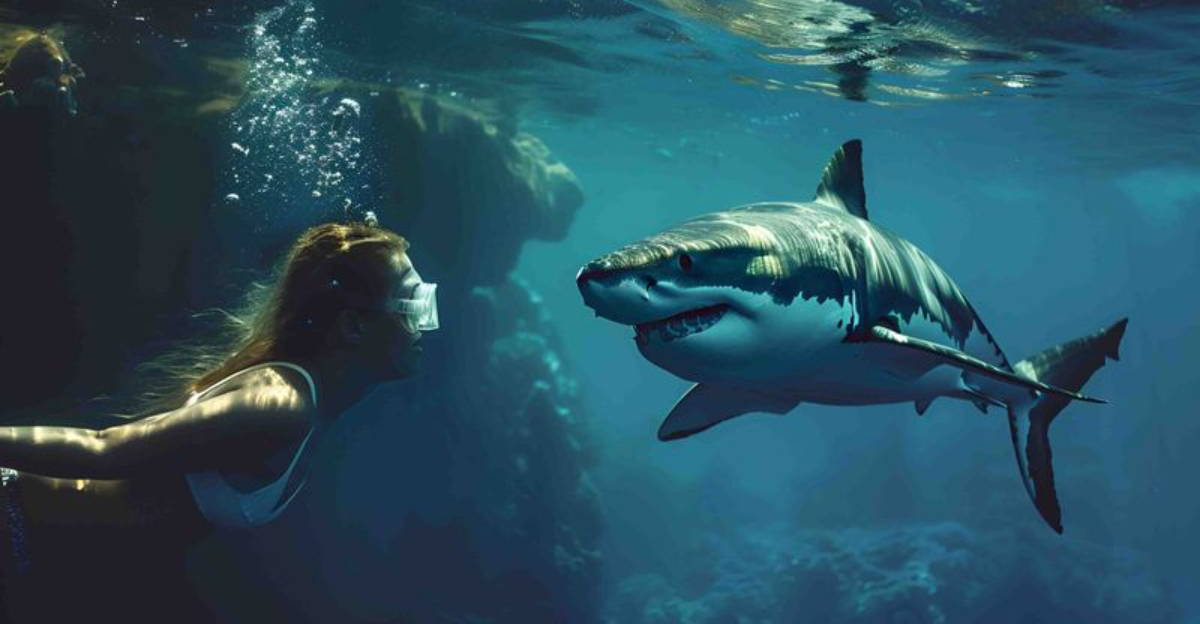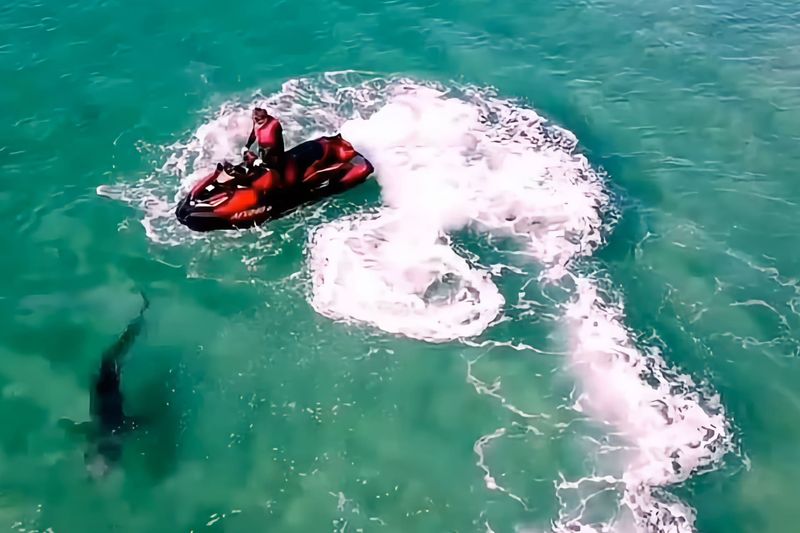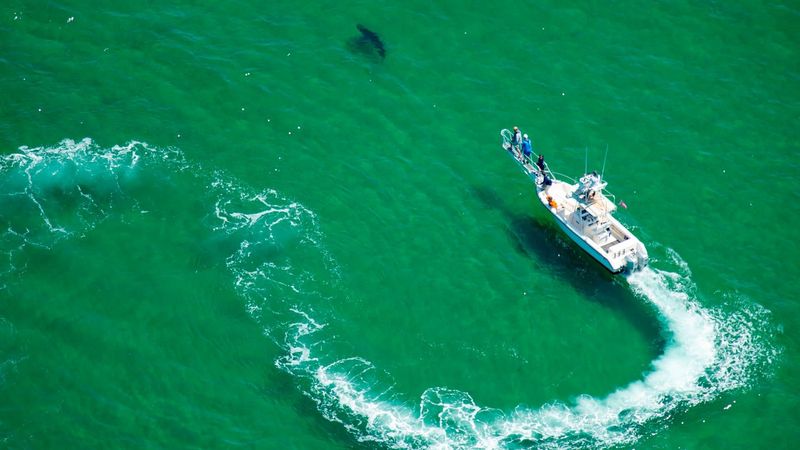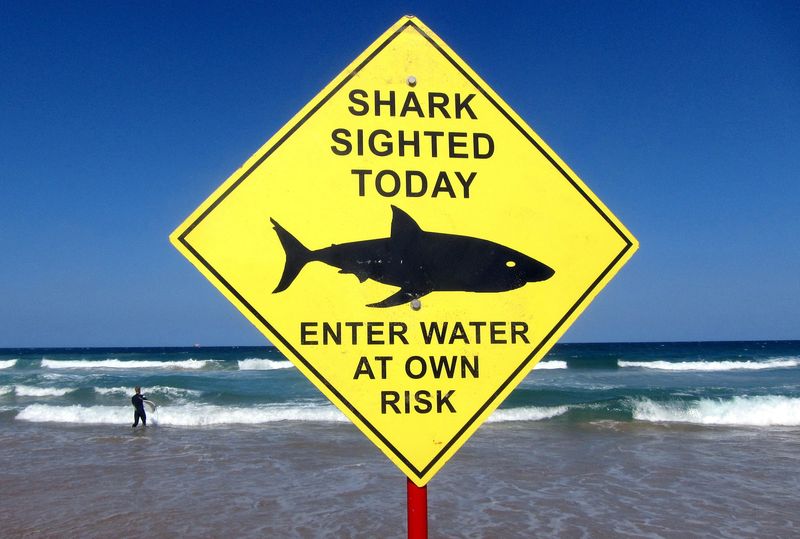12 Things You Should Always Do When Swimming in Shark Territory

Swimming in waters where sharks roam requires extra caution and awareness.
While shark attacks are actually quite rare, knowing how to behave in their territory significantly reduces your already small risk.
These practical safety measures can help you enjoy the ocean while respecting its most misunderstood predators.
1. Swim In Groups

Safety truly comes in numbers when sharks are nearby. Sharks typically avoid approaching clusters of swimmers, preferring isolated targets instead. By sticking close to your buddies, you create a larger, more intimidating presence underwater. This simple strategy dramatically decreases your chances of becoming the focus of a curious shark.
2. Stay In Clear, Shallow Water

The murky depths create perfect hunting conditions for sharks. Their exceptional senses work better where humans can’t see well. Remaining in transparent, knee-to-waist-deep water allows you to spot potential dangers while making you less accessible. Many shark species naturally avoid these shallower zones, giving you an added layer of protection.
3. Avoid Swimming At Dawn Or Dusk

Mother Nature’s transition hours serve as prime hunting windows for sharks. During these low-light periods, sharks gain a significant advantage with their superior senses. The dim conditions create confusion underwater, making it harder for you to spot approaching predators. Planning your ocean adventures during bright daylight hours substantially reduces potential shark encounters.
4. Don’t Wear Shiny Jewelry

Those gleaming accessories on your wrists and neck can become dangerous lures beneath the waves. Underwater, metallic objects create flashes that mimic the scales of fish. Sharks investigate these sparkles with their mouths first, not their hands! Leave valuable jewelry safely on shore – your bare skin presents a much less interesting target to curious predators.
5. Keep Movements Smooth And Controlled

Frantic splashing broadcasts a universal distress signal in the ocean. Sharks evolved to detect irregular movements that suggest injured prey. Graceful, deliberate swimming demonstrates strength rather than vulnerability. When moving through shark territory, channel your inner synchronized swimmer – fluid motions reduce your chances of registering as potential food on a shark’s sensory radar.
6. Avoid Wearing Bright Or Contrasting Colors

Your neon swimsuit might look fantastic on Instagram, but underwater it’s practically a dinner bell. Sharks possess remarkable color contrast vision, especially for yellows and oranges against blue backgrounds. Navy, dark green, or black swimwear helps you blend with the ocean environment. Looking less conspicuous underwater makes you less likely to attract unwanted shark attention.
7. Don’t Enter The Water With An Open Wound

Blood acts like a powerful magnet in the marine world. Sharks can detect incredibly diluted blood from astonishing distances – just one drop in an Olympic-sized pool won’t escape their notice. Even minor cuts or scrapes release enough scent to potentially attract sharks. When you’re sporting any kind of wound, enjoying the beach from the safety of the sand is your wisest option.
8. Stay Away From Fishing Boats Or Bait Zones

Fishing activities create seafood buffets that sharks can’t resist. The combination of bait, blood, and struggling fish broadcasts powerful attraction signals through the water. Give wide berth to areas where people are fishing or where bait has been released. Smart swimmers check for fishing piers, cleaning stations, or boat activity before choosing their swimming spot.
9. Watch For Unusual Fish Behavior

Fish understand shark dangers far better than humans do. When normally calm schools suddenly scatter or dive deeper, they’re often responding to a predator’s approach. Nature provides these early warning systems free of charge! Paying attention to marine life behavior gives you precious extra seconds to calmly exit the water before you even spot a shark.
10. Respect Shark Warnings And Signs

Those red flags and warning signs aren’t beach decorations – they represent real-time safety information. Local authorities track shark movements and post alerts based on recent sightings or patterns. Ignoring these warnings puts you at unnecessary risk. When lifeguards or beach patrols close waters due to shark activity, their decision comes from genuine concern for your safety.
11. Keep Pets Out Of The Water

Your four-legged friend’s enthusiastic paddling style might as well be a dinner bell. Dogs create irregular splashing patterns that mimic injured prey – exactly what attracts sharks’ attention. Additionally, pets can’t recognize shark warning signs like humans can. Keeping Fido safely playing on shore ensures everyone in your family returns home safely from beach day.
12. Stay Calm If You See A Shark

Your heart might race, but maintaining composure becomes your most valuable survival skill during a shark encounter. Panicked thrashing mimics injured prey behavior – exactly what triggers predatory responses. Face the shark while slowly backing toward shore or a boat. Most sharks are simply curious rather than hungry for humans. Your controlled exit demonstrates you’re neither prey nor threat.






